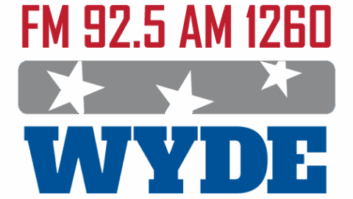The new digital radio
Feb 1, 2008 12:00 PM, Chriss Scherer
[email protected]
The annual Consumer Electronics Show was held in January, and as expected, HD Radio provided a larger presence than previous years. This is true, at least, in the Ibiquity booth. There were HD Radio receivers in various exhibits around the convention, but their presence was not much more obvious than in previous years. Still, there are more HD Radio receivers being manufactured, and it appears the word is getting out.
The big news for HD Radio was that a portable chipset was finally unveiled � at least for FM. This is one significant part of the HD Radio rollout that has been noticeably absent. Once implemented, it will provide a necessary element for HD Radio acceptance, putting a digital radio receiver in just about any portable device. Then it’s up to Ibiquity and the HD Digital Radio Alliance to have them included in cell phones and media players.
Another HD Radio technology being heavily touted was Itunes tagging. Announced last year, tagging provides a conduit between the radio station and music sales via an Ipod. When this was announced, I saw this as a suitable �if you can’t beat them, join them� response. Media players are here to stay, and integration with radio is a natural bridge. Don’t fight the trend, learn to use it and adapt as necessary.

The first real tagging demonstrations were shown at CES. I have seen some post-show reports, and it appears this has been noticed on the consumer side. That’s good for HD Radio. Unfortunately, tagging doesn’t appear to be going anywhere with radio stations.
I know several stations that embraced the idea, and quickly moved to update their automation systems and HD Radio transmission hardware to accommodate the technology before the end of 2007. These stations also contacted Apple to obtain the necessary coding to tie it together. They also placed orders for tagging-ready radios so they could test the system and even provide some listener incentives. These stations still can’t use the technology.
One contact told me that Apple has yet to provide the details to provide the tagging information. In addition, the tagging-capable receivers have been on back order for months. The last expected delivery date was the end of January.
Building the new system and adding features takes time, but we continue to experience slow progress in the development and rollout. An announcement is made and excitement is high, and then we wait. And wait.
Meanwhile, CES moves on with new choices and enhanced features for consumers. Media players and communication devices add more features all the time. Internet radio devices are more common and user-friendly than ever. Ubiquitous wireless broadband looks to be just around the corner.
Sprint has begun a soft launch of its Wimax wireless broadband service, called Xohm (pronounced �zome�), in Baltimore; Washington, DC; and Chicago. Soft launch means only Sprint employees have been given network access so far, which allows the company to evaluate and test the service before making it available to the public later this year at a cost of between $30 and $40 per month.
Xohm promises broadband speeds as high as 70Mb/s with a service contour of up to 50km. What sets the service apart from current broadband offerings is that Sprint promises to make Xohm chipsets available to OEMs for the development and marketing of media-specific platforms, such as mobile IP video and Internet radio applications.
So while the traditional approach to digital radio moves forward, alternate possibilities to deliver radio digitally continue to emerge. This may be the new digital radio.
What’s your opinion? Send it to[email protected]







